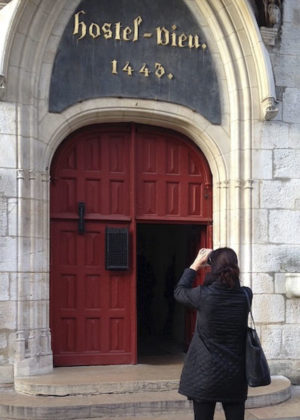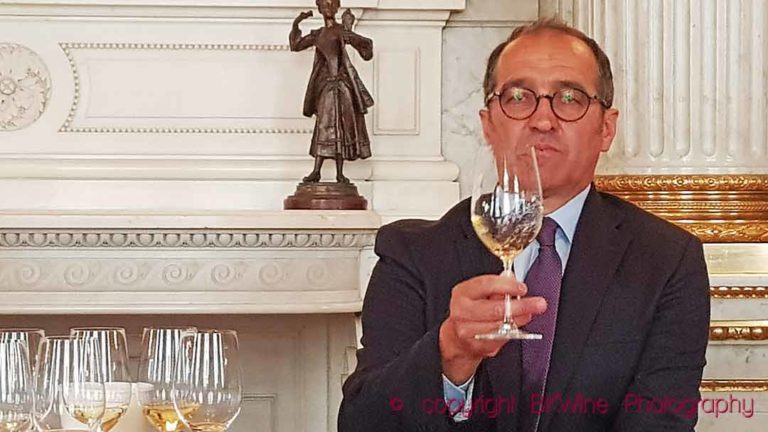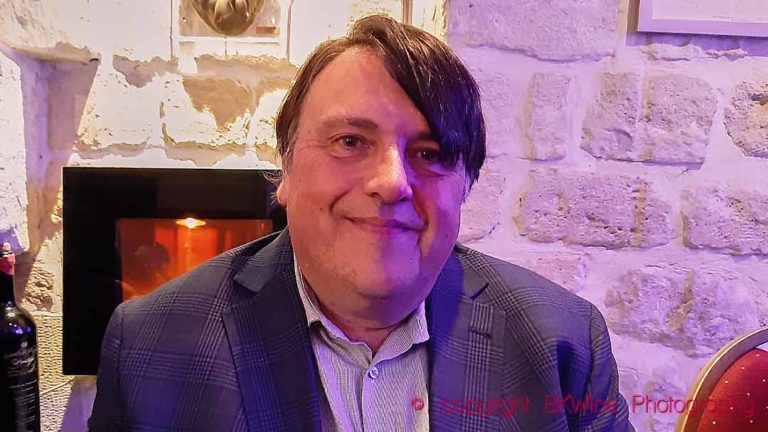Lauren Ackerman attributes some of the success of Ackerman Family Vineyards in Napa on a Bill Harlan quote. When asked why he bought cult winery Screaming Eagle at a time when most people considered retiring, he answered, ”If I don’t do this now, when will I?”
Ackerman, an equestrian-turned-vineyard owner, wine maker, and civic leader, unwittingly cantered into decanting after she and her husband Bob purchased a Coombsville horse farm replete with an old working vineyard in 1994.
Today, Ackerman Family Vineyards boasts a revitalized vineyard in burgeoning Coombsville AVA, a thriving joint venture with Lloyd Cellars, and an elegant new tasting room in downtown Napa christened The Aviary, part of their jaw-dropping Ackerman Heritage House renovation.
But Lauren Ackerman is the first to admit that the path to her family winery’s success has been neither straight, nor hurdle-free. Many times she considered giving up along the way. Each time, she asked herself the same question, “If I don’t do this now, when will I?”
Over a series of meetings, phone calls, and emails, Lauren Ackerman provides an exclusive glimpse into Ackerman Family Vineyards‘ unlikely path to success in Napa Valley.
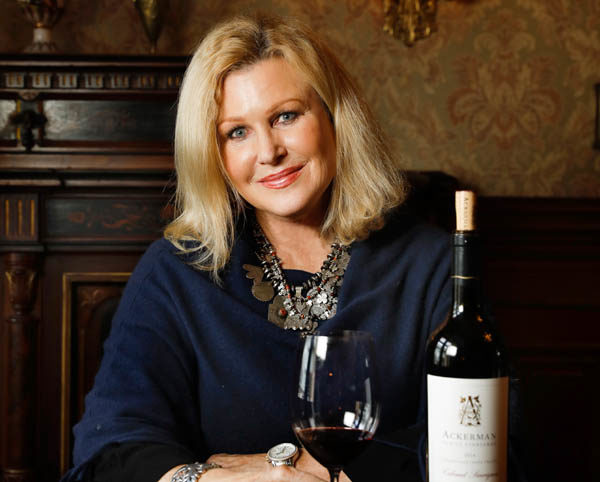
You and your husband Bob truly embody the ‘path less taken’ route to winery ownership. In 1995, Bob happened on what is now Ackerman Family Vineyards in Coombsville while searching for horses to purchase for you. By the end of the transaction, you owned not only the horses, but the sixteen acre farm then know as Stonehaven.
Talk about the impetus that lead you to make that leap from ‘cantering’ to ‘decantering.’ I understand the Bill Phelps and Robert Mondavi provided encouragement, and that you and Margrit Mondavi shared a love of art?
Bill Phelps and Robert Mondavi were mentors to us. Margrit Mondavi was a dear, close friend and a mentor to me in so many ways. Not just wine, but how to give back to the community and live a gracious life.
The wine started it – sitting down with a glass of wine is where all these conversations started. We’re always going to be part of the Napa community, which is close-knit and supportive. I’m happy I can bring up some of the historical aspects of Napa [through Ackerman Heritage House] that are different and unique, and wines are a part of that – it all kind of works together.
The key thing is that when we bought the farm, we had no intention of selling wine. Our first harvest 1994 – we didn’t get to keep that harvest. In fact, we only made two to three barrels under the Stonehaven label, which we gave to friends. Over the years, these friends told us to consider selling the wine, that it was “pretty good.”
Eventually, we did – we made our first commercial vintage of three hundred cases in 2003. We’ve deliberately kept production small ever since, focusing on quality, rather than quantity.
In 1997, you decided to replant pre-existing, phylloxera-infested vineyards on the property with drought-resistant cabernet sauvignon, and hired famed vineyard manager Mark Neal to complete the replant. In 2009, Ackerman Family Vineyards earned CCOF (California Certified Organic Farming), a three-year process. Why did you decide to invest in the organic certification, when you’d been farming sustainably from the vineyard’s inception?
We ‘borrowed’ Mark and his team through 2013. Mark Neal is still with us in vineyard, but he and his team are not in production.
In 2014, Rob Lloyd produced his first vintage with us. The consumer world doesn’t know that much about Rob Lloyd now, but they will. Rob established himself working for Rombauer and Cakebread Cellars, and now has his own brand, Lloyd Cellars, including Prescriptions Chardonnay. Rob also makes wines for Handwritten, Humanitas, and Jessup Cellars.
Rob’s got a natural ability, and is a wonderful guy. We’ve created a great partnerships between Lloyd Cellars and Ackerman Family Vineyards – his mother Dorothy Salmon is one of my best friends, so he’s truly part of the family.
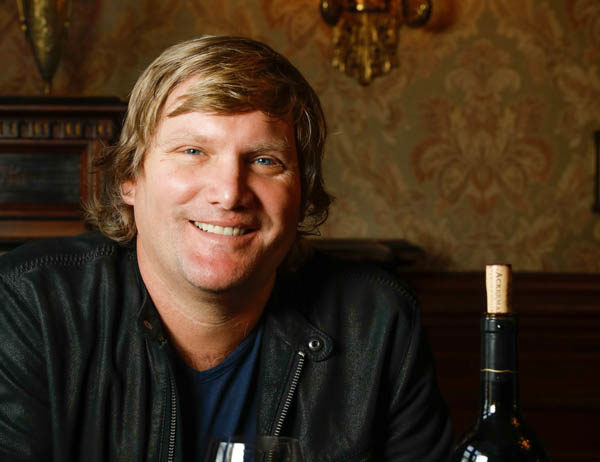
As for the vineyard, we’ve made no changes since achieving our CCOF certification, which took six years. The certification is really about the vineyard, not the wine. Technically, we don’t make ‘organic wines,’ we grow organic grapes.
[NOTE: Ackerman Family Vineyards also grows merlot, malbec, cabernet franc, petite verdot, and sangiovese for their Bordeaux and Cal-Italian blends.]
[Editor’s note: US regulations for labelling something as “organic wine” is quite different from EU regulations. For example, in the US no sulphur is permitted, which few wineries want to do, so there are in fact quite few US “organic wines”.]
Are you surprised by the growth of Coombsville AVA? Many consumers long overlooked this subregion, which boasts volcanic and alluvial easy-draining soils, the moderating influences of San Pablo Bay, favorable east/west aspects, early flowering, and later harvests.
Ackerman Family Vineyards was one of the first wineries in Coombsville in 1994. Back then, many considered Coombsville too cool, and looked for warmer areas. You have to remember the particular style at the time, when people were looking for bigger, juicier wines.
Today, the pendulum has swung. Now people want lower alcohol, more minerality, and deeper berries. Coombsville is known for this particular style, and is popular with restaurants because the lower alcohol doesn’t overpower food, and ages longer. We didn’t realize the aging capabilities until 2007, after we’d held back our first vintage for four years.
Because of these characteristics, the embrace by restaurant professionals and sommeliers has helped raised the whole appellation process worldwide.
In fact, during a subsequent trip to France, when they inquired where we were from and I responded, “a tiny AVA in Napa you’ve probably never heard of – Coombsville,” they recognized the name right away! I didn’t realize the impact of our AVA internationally until that moment.
These low-alcohol wines develop for two years in French oak barrels with minimal racking and no fining, followed by another two years aging in bottle. Why this focus on time-intensive aging?
Because of our vineyard’s minerality, the tannins need more aging, and therefore take a little more time.
However, we’re actually in the midst of changing aging protocols with our new winemaker. With Rob, who’s a bit of an artist, our first release this October 2017 will be our 2014. We’re putting them out there earlier, and getting good feedback.
In 2010, you purchased and painstakingly restored Ackerman Heritage House, a Queen Anne Victorian house in downtown Napa formerly known as The Gifford House.
In October 2016, Napa Mayor Jill Techel presided over the ribbon-cutting ceremony and grand opening of The Aviary Tasting Room and Ackerman Heritage House. Can you explain why restoration of Gifford House helps anchor the Napa community?
When I bought Gifford House, it suffered from over fifty years of deferred maintenance, and contained only one working bathroom for six people, with no shower.
From the outside it looked like a pink and purple haunted mansion; inside was lime green and purple. I saw this house, and thought, “Someone needs to save this house, because it has great bones underneath.”
So I did. It was quite a project, which took five years. I didn’t have a budget, and had to re-create the budget every year until completion. The 2014 earthquake didn’t help, which added about a year to the project.
The property’s carriage house, built between 1910-1918, and formerly used to house chickens, we’ve rechristened The Aviary, and converted into the Ackerman Family Vineyards and Lloyd Family tasting room.
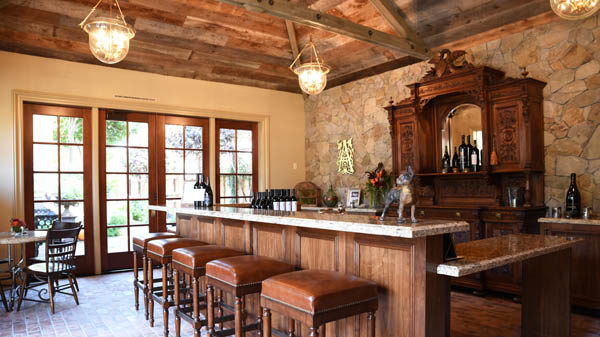
The Ackerman Heritage House provides the Napa community a rentable venue available for private events and dinners, and honors the heritage of all the families who owned the house before us.
Restoring the house wasn’t easy, nor a straight line. Many times I wanted to give up and sell it ‘as is.’ But what kept me going was an article I read about Bill Harlan regarding Meadowood, The Reserve, and his winery Screaming Eagle. To paraphrase, when asked why he built them at an age when most people think about retiring, he replied, “If I don’t do this now, when will I?”
I asked myself that when I considered purchasing this dilapidated house, so it was kind of leap of faith – and a belief that it would all work out. So, I do owe it to another wine maker for my leap of faith!
The key thing is that now that the door is open, and the project completed, it’s so gratifying how many people have responded positively. Many call it a ‘living museum, telling me, “Wow, I feel like I’m stepping back in time.”
Especially the stained glass windows. Luckily, we restored the seventeen original windows prior to the 2014 earthquake. Now house has twenty-five – we added a few old and new ones. The windows alone – I can’t think of another residential house in Napa with that many stained glass windows.
But really, it’s a gift to the community, I’m just a steward. Ultimately, the house supports wine, and the wine supports the house, so it’s about cross opportunities.
And so, I feel it was truly a gift when we were given the key to the city by Mayor Jill Techel, because part of the key to the future of Napa is the restoration of these Grandes Dames.
Anything else you’d care to share with readers about Ackerman Family Vineyards or your work in the Napa community?
I’m excited to be a part of the new CIA at Copia. I use to be on the board of the old Copia, and even chaired for three years. Now that the Culinary Institute of America at Greystoke has purchased Copia as a satellite site, I’ve been invited back to as a Fellow member, which I’ve accepted.
The CIA has instituted many of same programs, as well as upgraded what Copia was doing back in 2001. So it’s a new, improved Copia, and I’m happy to be a part of that – to have come full circle.
Finally, if your experience being a family winery owner and philanthropist in Napa has taught you anything, it’s taught you…?
The first word that pops into my head is love. It’s taught me love. You have to love what you do, the people you work with, and the community. And I’ve received a lot of love back…that’s what’s most important.
LM Archer is a freelance writer based in Santa Cruz, California. She is Francophile who considers wine an art and Burgundy the centre of the universe. She is the founder and editor of binNotes | redThread.


